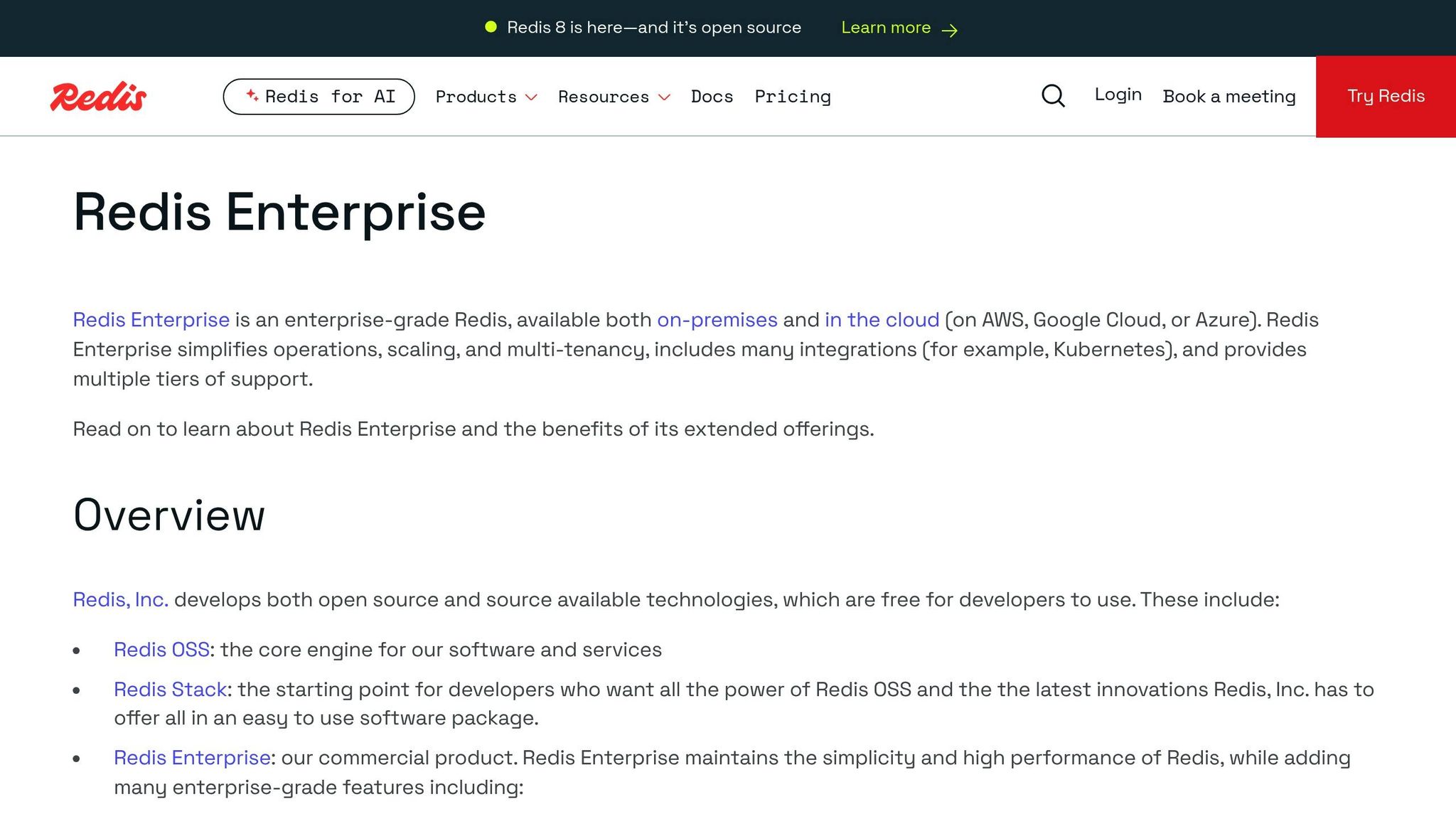Want to run a successful trading contest? You need software with these 8 key features to keep things fair, engaging, and efficient for both organizers and participants:
- Automated Rankings: Real-time updates for metrics like profit, drawdown, and win ratio ensure fairness and engagement.
- Customizable Rules: Tailor contest settings like leverage limits, trading hours, and entry requirements to suit your needs.
- Live Score Updates: Keep participants engaged with instant leaderboard changes and performance tracking.
- Platform Integrations: Seamlessly connect with trading platforms for accurate trade monitoring and data collection.
- Performance Analytics: Provide participants with detailed insights into their trading success and patterns.
- Risk Controls: Enforce rules automatically, monitor suspicious activity, and ensure compliance with regulations.
- Management Dashboard: Streamline contest setup, participant tracking, and prize distribution in one central hub.
- Social Tools: Add chatrooms, performance sharing, and educational features to build a vibrant trading community.
These features simplify contest management, boost trader engagement, and support compliance, making them essential for any trading contest software.
Want Bragging Rights? Create Your Own Trading Competition ...
1. Ranking System with Auto-Updates
An automated ranking system is the backbone of any successful trading contest. It tracks key metrics like net profit, profit factor, win ratio, maximum drawdown, and risk-reward ratio in real time to rank participants effectively.
| Metric | Description | Importance |
|---|---|---|
| Net Profit | Total monetary gains/losses | Key factor for overall ranking |
| Profit Factor | Ratio of gross profit to gross loss | A value above 2.0 signals strong performance |
| Win Ratio | Percentage of winning trades | Reflects trading consistency |
| Maximum Drawdown | Largest decline from peak to trough | Indicates risk management skills |
| Risk-Reward Ratio | Potential profit vs. potential loss | Highlights trade quality |
This system not only simplifies the organizer's workload by automating calculations but also ensures fairness. It keeps tabs on critical parameters like maximum lot sizes, leverage limits, and drawdown levels. Real-time updates make the contest more engaging by instantly showing how participants' performance evolves.
"Competitive spirit is an intrinsic facet of human nature... In the world of trading, this competitiveness is manifested in trading tournaments, an exciting field where participants aim to outperform their opponents through intelligent investment strategies and quick decisions."
For optimal functionality, the ranking system should allow flexible scoring and automate trade validation to ensure participants comply with the rules.
"Evaluating trading performance is essential for investors seeking long-term success in the financial markets."
This automated ranking system lays the groundwork for exploring contest rules and live updates in the next section.
2. Contest Rules and Settings
Trading contest platforms should allow flexible settings to accommodate different competition formats and trader expertise. Alongside automated rankings, clear and transparent rules help ensure fair play and keep participants engaged.
| Parameter Category | Customizable Elements | Purpose |
|---|---|---|
| Trading Limits | Leverage, lot size, position limits | Control risk and promote fairness |
| Time Settings | Contest duration, trading hours | Adapt to various trading styles |
| Entry Requirements | Minimum deposits, trade counts | Maintain participant standards |
| Winning Criteria | Profit targets, risk metrics | Establish success benchmarks |
Organizers need the ability to adjust timeframes - ranging from weekend competitions to multi-week events - and set clear qualification rules to accommodate different trading approaches.
Some key adjustable features include:
- Minimum Trade Requirements: Define the number of trades needed to qualify.
- Performance Metrics: Set specific profit and risk benchmarks.
- Trading Instrument Restrictions: Limit eligible assets for trading.
- Position Sizing Guidelines: Control leverage and lot size limits.
These customizable settings, paired with automated rankings, help create an engaging and fair environment for all participants.
3. Live Score Updates
Live score updates play a key role in keeping trading contests engaging and interactive. These platforms use advanced technology to ensure participants can see their performance in real time.
Here’s how a live scoring system typically works:
| Metric Type | Display Elements | Update Frequency |
|---|---|---|
| Performance Metrics | Realized P/L from closed positions | After each trade closes |
| Ranking Updates | Current position | Every hour |
These metrics rely on cutting-edge systems to ensure updates are fast and accurate.
How Real-Time Updates Work
Real-time updates require a robust technical setup to handle large amounts of data with precision. The key components include:
- High-precision timestamping: Tracks trades accurately.
- Real-time packet capture systems: Validates trading activity.
- Cloud-based architecture: Ensures updates are delivered to all users simultaneously.
"Traditionally when people migrate to the cloud, they're using computing and storage technology. But for trading and financial firms, there are a lot more offerings." - Leon Liang, ICE's director of feeds business development
A great example of this in action was the TradingView Paper Trading Competition by Pepperstone in April 2025. Leaderboard rankings were updated hourly based on closed trades.
Redis Enterprise and Real-Time Leaderboards

Modern platforms often rely on tools like Redis Enterprise with ZSETs to handle real-time leaderboards. These tools enable:
- Instant calculations for rankings.
- Efficient management of large data sets.
- Real-time updates for performance metrics.
Cloud integration has become essential for scalability. In fact, 65% of trading platforms report scalability as their top benefit from cloud-based systems. This infrastructure ensures reliable updates, even during peak trading times when thousands of participants are active.
The system provides clear details like realized profit/loss, positions, and qualifying criteria, making it easy for users to understand their rankings.
4. Trading Platform Connections
Platform connections are essential for smooth data flow and accurate performance tracking. Modern trading platforms use integrations to monitor trades reliably and automate data collection.
Integration Capabilities
To accurately capture participant activity, trading contest software needs to connect with various trading platforms. These integrations serve two key purposes:
| Integration Type | Primary Function | Business Impact |
|---|---|---|
| Real-time Monitoring | Tracks and verifies trades instantly | Maintains contest integrity |
| Data Collection | Gathers performance metrics automatically | Minimizes manual effort |
These features are the backbone of automation in contest management.
Benefits of Automation
Automated data collection through platform connections revolutionizes trading contests. Justin Hertzberg, CEO of FPFX Technologies, explains:
"By creating a trading competition with a financial incentive, brokerages can encourage immediate engagement among visitors to their platform, leading to higher conversion rates".
These integrations allow organizers to monitor trades in real time, verify them automatically, calculate performance metrics instantly, and generate detailed reports for participants.
Advanced Integrations
Some platforms go beyond basic trade tracking by integrating with services like payment processors, AML/KYC verification systems, marketing CRMs, and analytics tools. These added features enhance the overall contest experience and functionality.
Flexible Contest Design
Flexible contest setups can engage different types of users. As Justin Hertzberg notes, "Different firms with different audiences can attract clients to participate in a crypto-only contest, an index-only contest, or one which includes all asset classes". This adaptability allows contests to target niche markets or include a wide range of asset classes.
The success of this approach is evident in FPFX Tech's recognition as "Best Prop Trading Technology Provider" at the 2025 UF Awards.
sbb-itb-cad9573
5. Performance Tracking Tools
Effective performance tracking tools are a cornerstone for managing trading contests. These tools provide analytics that help transform raw data into clear insights, enabling better decision-making. Along with live score updates, accurate tracking sharpens contest analysis.
Key Performance Metrics
Modern platforms offer detailed statistics to evaluate trading success across several critical areas:
| Metric Category | Key Measurements | Purpose |
|---|---|---|
| Profitability | Net profit, Win/Loss ratio, Average trade P/L | Measure overall trading success |
| Risk Management | Maximum drawdown, Consecutive losses, Position sizing | Track and manage risk exposure |
| Trading Behavior | Average holding time, Long vs. Short P/L, Trading frequency | Understand trading patterns |
Real-Time Analytics
Real-time tracking allows traders to make quick decisions and get immediate feedback. As Milan Cutkovic from Axi EU puts it:
"Focus, achievement, and transparency. Three words capture the essence of being able to track your performance as a trader."
For example, if a trader starts with $5,000, grows it to $6,000, but then drops to $3,000, the system records a $2,000 drawdown. These instant insights help traders adapt quickly. Advanced tools also ensure data accuracy and integrity.
Advanced Monitoring Features
Prop Pulse's Managing Partner Andrey Kamyshanov highlights their approach to tracking performance:
"With Prop Pulse, we empower brokerages to enter the world of proprietary trading with confidence, offering a comprehensive solution that enhances their capabilities, flexibility, and competitiveness. We believe that Prop Pulse will open new horizons for our clients, enabling them to explore new avenues of growth and success in the trading industry."
Key features of their platform include:
- Automated Validation: Automatically detects and flags data anomalies.
- Health Monitoring: Monitors data integrity in real-time and alerts users to any issues.
- Performance Reconciliation: Provides end-of-day summaries to confirm the accuracy of real-time data.
Growth Potential
The prop trading market was valued at $6.7 billion in 2020 and is expected to grow at an annual rate of 4.2% through 2028. Many platforms now use AI to improve real-time data accuracy. These advancements not only ensure data reliability but also give participants actionable insights to refine their strategies.
6. Risk and Compliance Controls
Effective risk and compliance controls protect both organizers and participants by using monitoring systems and automated safeguards.
Advanced Trade Monitoring
Trading contest platforms use multiple monitoring layers to keep track of essential parameters:
| Monitoring Aspect | Key Metrics | Purpose |
|---|---|---|
| Trade Execution | Speed, lot size changes, slippage | Detect manipulation |
| Trading Patterns | Success rates, position sizing, timeframes | Spot unusual activity |
| Risk Exposure | Drawdown levels, profit targets, position limits | Enforce contest rules |
| Compliance | KYC verification, screen recordings, trading hours | Ensure adherence to regulations |
Automated Rule Enforcement
"The belief that you can cheat the evaluation system in funded trading programs is a dangerous illusion - and one that often leads to wasted time, failed accounts, and even permanent bans."
Key rules are automatically monitored to maintain fairness:
- Maximum drawdown limits
- Minimum trading day requirements
- Restricted trading hours
- Position size caps
- Profit target thresholds
Regulatory Compliance Framework
Trading contests must follow regulations such as the Dodd-Frank Act, MiFID II, and the Commodity Exchange Act (CEA). These ensure fair practices, transparent operations, orderly trading, and investor protection.
Real-Time Risk Management
"Justin's exceptional standards in regulatory compliance and his long-term vision clearly set him apart. 🏆 We only partner with the best, ensuring a safe and prosperous trading future for our community."
Advanced tools take immediate action when necessary, such as closing positions if drawdown limits are breached, profit targets are hit, or trading rules are violated. Suspicious patterns are flagged and addressed instantly. This structured approach protects participants and ensures contests remain fair, paving the way for efficient contest management tools discussed in the next section.
7. Contest Management Dashboard
The contest management dashboard acts as the central hub for running trading competitions. It combines user-friendly controls with tools for effective monitoring and management.
Core Dashboard Features
The dashboard is divided into key functional areas, each designed to handle specific tasks:
| Component | Purpose | Key Functions |
|---|---|---|
| Contest Setup | Create and configure competitions | Custom registration fields, rule settings, platform integration |
| Participant Management | Manage users and communication | Approve registrations, track participants, send messages |
| Performance Monitoring | Track contest activity in real-time | Live stats, rule compliance checks, trading pattern insights |
| Results Management | Handle outcomes and reporting | Automated rankings, prize distribution, performance analysis |
Customization Made Simple
The configuration tools allow organizers to tailor every aspect of the contest. You can set up custom registration fields, adjust competition rules, manage notifications, and streamline moderation workflows - all in one place.
Real-Time Monitoring Features
Real-time tools provide instant updates on key metrics, including:
- Participant activity and engagement levels
- Trading volumes and patterns
- Alerts for rule violations or compliance issues
- Contest milestones and overall progression
Analytics and Reporting Tools
The dashboard delivers easy-to-read visual analytics, making it simple to track performance. Key metrics are displayed prominently so organizers can quickly evaluate the contest's progress.
In addition to analytics, automated features ensure contests run smoothly and fairly.
Automated Moderation Features
Built-in moderation tools help maintain fairness and integrity by offering:
- Entry verification
- Fraud detection
- Trading pattern analysis
- Real-time rule enforcement
This dashboard simplifies the management of trading competitions, making it easier to create, monitor, and oversee contests. It also sets the stage for interactive features that keep participants engaged throughout the event.
8. Social and Interactive Tools
Social and interactive tools turn trading contests into lively communities. Beyond rankings and dashboards, these tools let participants connect, share, and learn from one another.
Community Communication Channels
Real-time communication is key. Features like chat rooms and forums allow traders to exchange ideas, discuss strategies, and share performance insights. These spaces help participants build networks while celebrating achievements and learning from each other.
"Bringing together the tools for effective trading and infusing the power of social media to make disparate information viable to daily traders could be very useful." - Stephen Karpin, general manager of equities and margin lending of CommSec
Performance Sharing Features
The platform includes social sharing options that encourage engagement and learning:
| Feature | Purpose | Benefits |
|---|---|---|
| Badges | Mark milestones | Encourages participation |
| Trade Highlights | Showcase successes | Promotes peer learning |
| Rankings | Display standings | Fuels competition |
| Strategy Insights | Share approaches | Supports skill-building |
Educational Components
Participants can also enhance their skills through tools designed for learning, such as:
- Strategy discussions
- Analyzing trading patterns
- Market commentary
- Reviewing performance
Community Rating System
To ensure meaningful interactions, a rating system helps highlight valuable contributions. Users can:
- Rate shared insights
- Validate trading strategies
- Recognize top contributors
- Identify trusted community members
Real-Time Market Commentary
Traders can share live market updates and analysis, transforming individual observations into a pool of collective knowledge.
"Think of it as the difference between solo investing and having a smart, active team in your corner."
These tools not only enhance the technical features of the contest but also create a more engaging and collaborative experience for participants.
Conclusion
Each feature discussed earlier plays a crucial role in improving contest performance, benefiting both organizers and participants alike.
Modern trading platforms now offer tools that make contests more engaging and efficient. They allow customization for specific asset classes or multiple asset types, while automation helps reduce manual tasks, ensuring smooth operations and compliance.
"We can help with the onboarding and setting up the platform. If a broker wants specific settings in their contest, one team can set up those specific parameters. That means they can be relaxed about the contest and know it will run smoothly"
Here’s a quick look at the core benefits these features provide:
| Benefit | Impact |
|---|---|
| Client Acquisition | Lower costs and improved conversion rates |
| Platform Engagement | Boosted activity from both new and existing users |
| Risk Management | Greater control over trading behaviors and compliance |
| Operational Efficiency | Streamlined workflows with less manual effort |
| User Experience | Better engagement through interactive tools |
FAQs
How do automated rankings create fairness and boost engagement in trading contests?
Automated rankings play a key role in ensuring fairness and enhancing engagement in trading contests. By using clear, data-driven metrics to evaluate performance, they offer participants a transparent and accurate way to track their progress and compare results. This fosters a level playing field and promotes healthy competition among traders.
Additionally, automated systems streamline leaderboard updates and rankings, reducing the manual workload for organizers while ensuring real-time accuracy. This not only improves the user experience but also keeps participants motivated to stay active and improve their strategies throughout the contest.
What are the advantages of integrating trading contest software with your trading platform?
Integrating trading contest software with your trading platform provides a seamless experience for both participants and organizers. It ensures that all features, from real-time leaderboards to analytics, work effortlessly within your existing system, reducing downtime and improving usability.
This integration also allows for customized competition settings tailored to your platform's needs, creating a more engaging and interactive environment for users. By streamlining operations, it helps organizers save time and focus on delivering a high-quality experience for participants.
How do social and interactive features improve the trading contest experience?
Social and interactive features play a key role in creating an engaging and competitive environment for trading contest participants. Real-time leaderboards, for example, allow users to monitor their performance and compare it with others, fueling motivation and excitement throughout the contest.
Other interactive tools, such as detailed trading statistics, provide participants with valuable insights into their strategies and outcomes, helping them refine their skills. By fostering a sense of community and competition, these features enhance the overall experience for both participants and organizers, ensuring the contest is both enjoyable and impactful.

